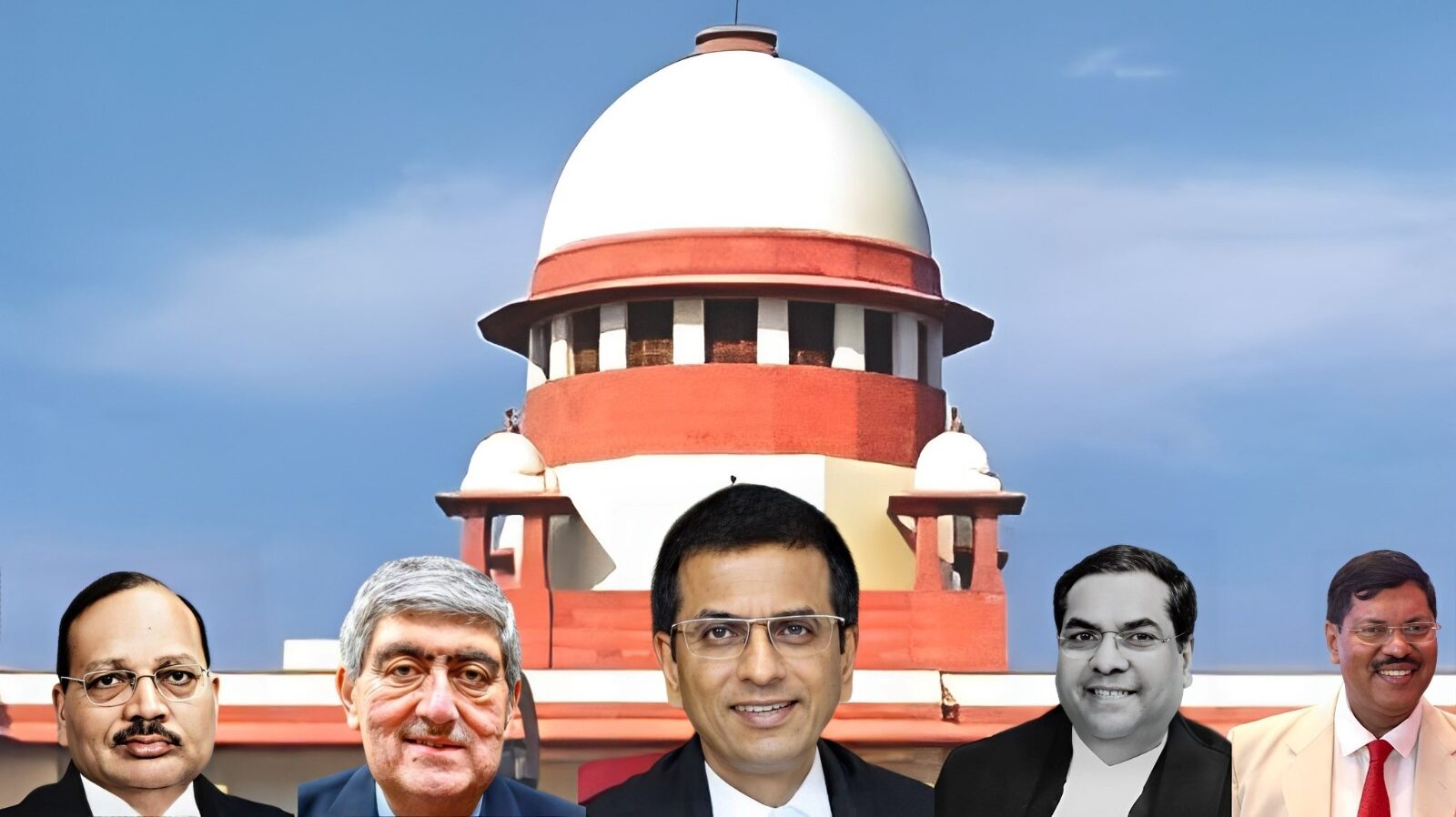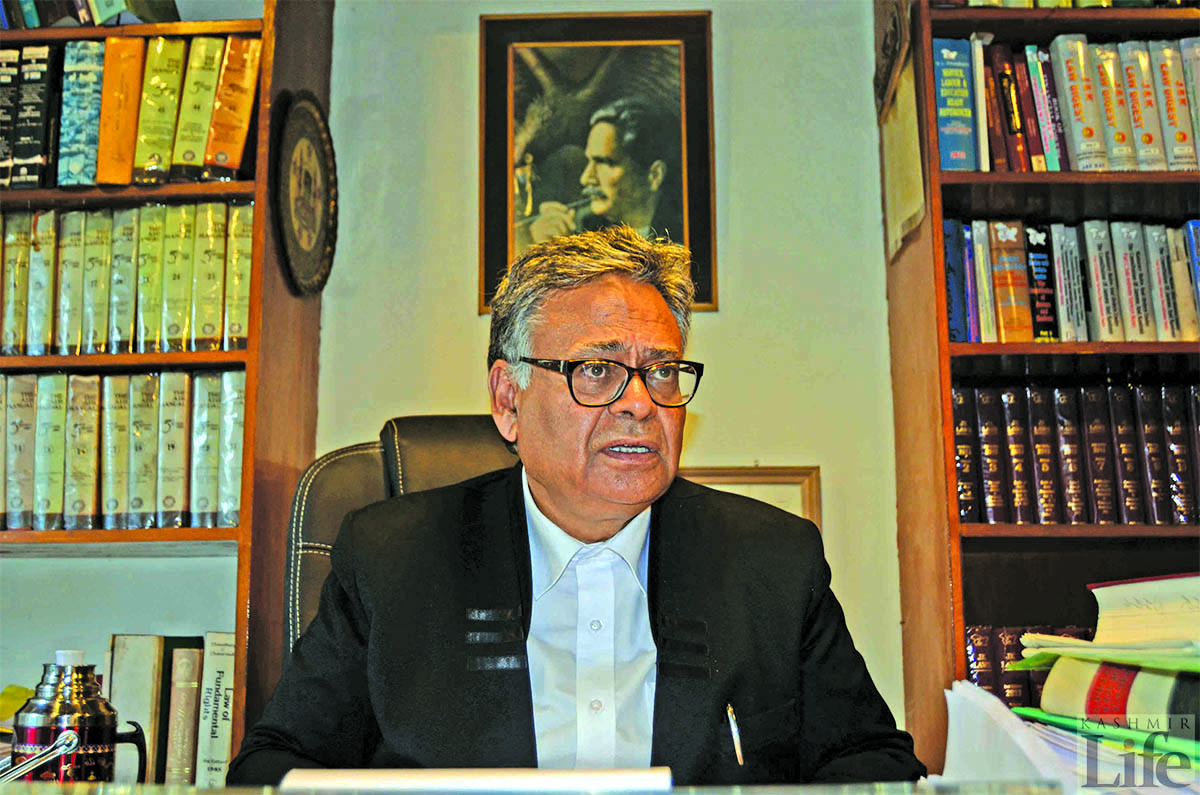On Day 5 of the hearing in a batch of petitions challenging the August 5, 2019 decision to put an end to the autonomy guaranteed to J&K under Article 370 of the Constitution, advocate Zafar Shah continued his arguments stating that Article 370 acted as a substitute for Maharaja Hari Singh’s authority if ever Jammu & Kashmir were to integrate with India completely, reports Gursimran Kaur Bakshi

Towards the end of Day 5 of the hearings In Re Article 370, the Chief Justice of India (CJI) DY Chandrachud concurred with senior advocate Rajeev Dhawan on the importance of books, libraries and record-keeping in general.
“I have a very diverse library, and I wanted to give it to the Supreme Court but there are no takers,” Dhawan stated.
Expressing the interest of the Supreme Court in the books, the CJI also told Dhawan, “Today, if you digitise your collection [of books], there are resources across the world where they are putting it on ‘commons’ so that researchers may make use of the material. It is useful.”
Earlier, for much of the day, advocate Zafar Shah, for the Jammu & Kashmir (J&K) Bar Council, continued his submissions on how Article 370 retained the powers exercised by the last Dogra Maharaja of J&K, Maharaja Hari Singh in the Instrument of Accession signed on October 27, 1947.
A five-judge Constitution Bench, headed by the CJI is hearing a batch of petitions challenging the August 5, 2019, decision to end the autonomy guaranteed to J&K under Article 370 of the Indian Constitution.
The Bench, also comprising Justices S.K. Kaul, Sanjiv Khanna, B.R. Gavai and Surya Kant, has so far heard submissions from senior advocates Kapil Sibal and Gopal Subramanium, besides Shah.
J&K did not completely integrate with India
Shah reiterated submissions he had made towards the end of yesterday that although J&K “unconditionally acceded” to India through the Instrument of Accession, it did not “integrate” with India since no “merger agreement” was executed.
According to Shah’s submissions, after Article 370 of the Indian Constitution (draft Article 306A) was drafted, the Article retained the powers once exercised by the maharaja through the Instrument of Accession.
He further added that the powers subsumed in Article 370 can either be termed as “sovereign or residuary” powers.
Why did J&K need Article 370?
Shah submitted that since no merger agreement was signed, J&K maintained its “constitutional autonomy”. He added that it was through the residuary powers to make laws that the State exercised its autonomy.
Article 370: A mechanism through which J&K could have chosen to integrate with India
Building on this argument, Shah explained how this power could have been exercised through Article 370.
He said that Article 370 acted as a “substitute for a merger agreement if complete integration [of J&K with India] had to take place.”
Shah explained this by walking the Bench through various provisions of Article 370.
With regard to Article 370(1), he said that the clause talks about the application of laws of the three lists under the Seventh Schedule of the Indian Constitution to be applicable to J&K.
Shah first referred to Article 370(1)(i). Here he pointed out that this clause does not talk about granting more powers, or what he termed as “donation of powers” to India.
Shah clarified that since full powers were already conferred to India to make laws for J&K on three subjects, namely defence, external affairs and communication, Article 370(1)(i) uses the expression “consultation”.

He added: “Consultation does not mean to agree or disagree [with someone]. But the dominant person would have his way.”
At this juncture, Shah also pointed out that the expression “concurrence” used in Article 370(1)(ii) or 370(1)(d) means both parties have to agree.
As per Article 370(1)(i), the concurrence of the State is required to extend Indian laws other than specified under the Instrument of Accession.
Whereas, Article 370(1)(d) allows constitutional provisions of the Indian Constitution other than Articles 1 and 370 to be extended to the State based on its concurrence.
He also added that in the context of J&K, concurrence would be the concurrence of the people of the State expressed through the council of ministers.
He clarified: “Both [parties] have to agree in respect of any Entry [under the Seventh Schedule] in which the Parliament had the power to make laws.”
Shah averred that under Article 370, it cannot be conceived that the Parliament extends Indian laws to be applicable to J&K when there is no corresponding constitutional Entry for the same which would support the extension of the law to the State.
To this, he added that the Indian Constitution granted a degree of constitutional autonomy to J&K “which was nothing but the sovereign or residuary powers of maharaja embedded in Article 370”.
Question of merger of J&K
Justice Khanna, responding to Shah’s submission that the merger of J&K with India was not complete, said that the question of merger is “completely certain”.
He referred to Article 1 of the Indian Constitution which reads that India is a Union of States which corresponds to Article 3 of the Constitution of J&K.
Khanna clarified Article 370 only gives special rights to the State legislature to make laws for itself.
Even when Shah expressed that the Constituent Assembly of J&K did not have the intention to completely integrate with India and do away with Article 370, Justice Khanna remarked: “I have a reservation on the use of the word complete integration.”
He added: “Complete integration has taken place in terms of Article 1 of the Indian Constitution.”
The CJI added: “There was no conditional surrender of sovereignty. The surrender of sovereignty was absolutely complete.”
“Once the sovereignty was unquestionably and fully vested with the dominion of India, then the only restraints which would have applied was the power of the Parliament to make laws,” the CJI averred.
The CJI substantiated his statement by referring to the Constitution (Application to Jammu and Kashmir) Order, 1954 (Presidential Order C.O. 48).
In the Order, Article 248 of the Indian Constitution, which vests “residuary powers” of legislation in the Indian Parliament, was amended with relation to J&K: “The Parliament has exclusive powers to make laws with respect to prevention of activities directed towards disclaiming, questioning, disrupting the sovereignty and territorial integrity of India or bringing about a secession of a part of the territory of India.”
This makes it without a tail of doubt that the sovereignty vested with India, and no vestige of sovereignty was retained post the Instrument of Accession by J&K, CJI remarked.
However, since the amendment to Article 248 was extended to J&K through a Presidential Order, it does not contradict the “residuary powers” inherent in the State of J&K.
However, the debate continued since Shah could not agree with the reasoning of the Bench. Shah reiterated his argument that sovereignty was not transferred through the Instrument of Accession. It can only be transferred through a merger agreement.
To this, the CJI pointed out that even today, Parliament does not have complete powers to make laws for Entries in the State List but that does not affect the fact that ultimately sovereignty lies with India.
He added: “Once Article 1 of the Indian Constitution says that India shall be a Union of States that includes the State of J&K, the transfer of sovereignty was complete. We cannot read the Indian Constitution as a document that retains some sovereignty to J&K post Article 370.”
Developing this argument further, the CJI stated that the use of the word “concurrence” is not unique to constitutional references to J&K, many different shades of concurrence are required in the Constitution of India.
The CJI presented the example of Article 246A of the Indian Constitution, which provides for the Goods and Services Tax (GST). He stated that under this provision, the Parliament cannot do anything without the concurrence of the State legislature.
He also added that “the restraint on the powers to make laws is just a fetter on the Parliament and it is implicit in the scheme of the Indian Constitution”.
The counsel and the Bench went back and forth on this issue. But they could not concur.
Article 253 of the Indian Constitution
Shah, who continued to plead on the same issue, then asked the Bench to refer to Article 253 of the Indian Constitution as applicable to J&K which was amended by the Presidential Order C.O. 48.
Article 253 deals with international treaties, agreements and conventions to be ratified by the Indian Parliament
As per the amendment, a proviso was added to Article 253: “Provided that after the commencement of the Constitution (Application to Jammu and Kashmir) Order, 1954, no decision affecting the disposition of the State of Jammu and Kashmir shall be made by the Government of India without the consent of the Government of that State.”
Shah argued that no decision affecting the disposition of J&K shall be made by India without the consent of the State.
When CJI asked what disposition means, Shah said that India could not take any international “settlement” with respect to J&K without the consent of the State.
However, the CJI interrupted and replied that other international treaties and declarations such as the Universal Declaration on Human Rights would still apply to J&K.
But Shah failed to offer any definition of what “disposition” meant in the context of J&K under Article 253 of the Indian Constitution.
Shah concluded his argument by quoting former Prime Minister of India Atal Bihari Vajpayee’s 2005 Srinagar speech, “The issue of Kashmir will be solved within the purview of insaniyat and jamhuriyat.”
Shah hoped that the court would keep the promise in that statement.
The report was republished as part of an arrangement with The Leaflet. The original report was published here
The Story So Far















